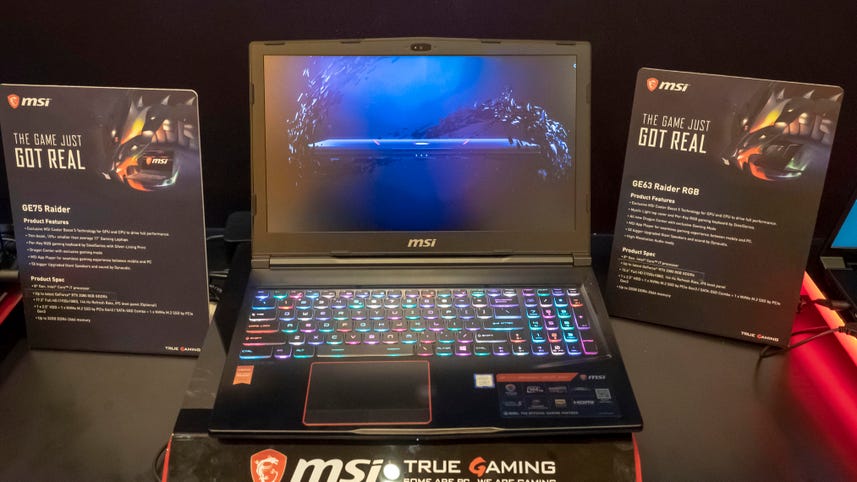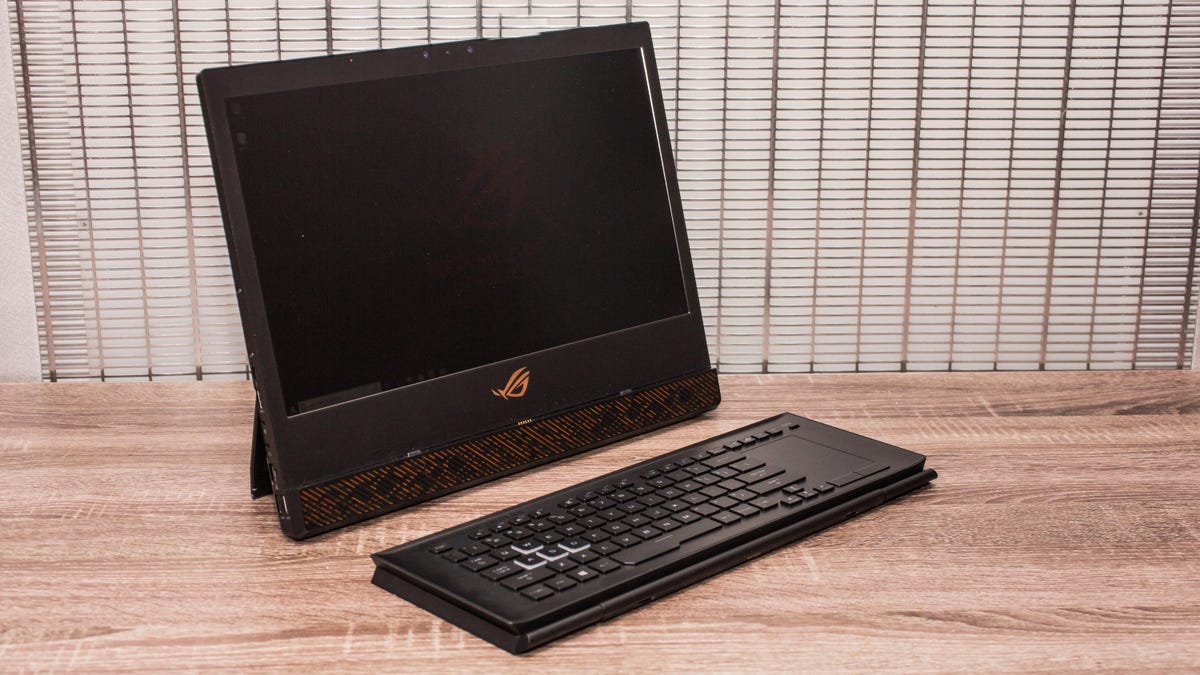
Asus ROG Mothership GZ700
Asus has the most radical laptop design at CES 2019 with the transforming Mothership; it's built like a detachable with a foldable keyboard. The system section stands up, which allows for the improved airflow that 's necessary for all the high-end components like an overclockable Core i9-8950HK, Nvidia GeForce RTX 2080 and more.
For much more on laptops and PCs at CES 2019, see our colossal wrapup here.
Asus ROG Mothership GZ700
As you'd expect, it's pretty heavy -- 10.4 pounds. So it's more a luggable than a laptop. No pricing available yet, but it's expected to ship by the end of March.
Acer Predator Triton 900
The Triton 900 is the another gaming laptop with a reimagined design -- it has a cantilevered display that can be flipped around for when you're using a controller instead of mouse and keyboard.
Acer Predator Triton 900
At CES we got the price: $4,000 when it arrives in March. That's with a 17-inch 4K display, eighth-gen Intel Core i7 processors and Nvidia's GeForce RTX 2080 GPU.
Alienware Area-51m
The brand-new Area-51m is as close as a laptop version of Alienware's desktop Area-51 can get. You can upgrade both the CPU and the GPU, and it's packed with all the top-end mobile components available at the moment: up to an overclockable Core i9-9900HK, GeForce RTX 2080 and 2.5Gb Wi-Fi, among other things.
Alienware Area-51m
Pricing starts at around $2,000 when it ships the third week of January, but obviously that's with entry-level components.
Alienware m17
Dell expands its Nvidia Max-Q slim Alienware line from a solo 15-inch model, the m15, to to a 17-inch model. This one can pack all the latest features, too, including a 4K display, up to Intel Core i9-8950HK and GeForce RTX 2080 GPU.
Alienware m17
Prices for the m17 start at $1,650 and it's available now, though not yet with the RTX graphics.
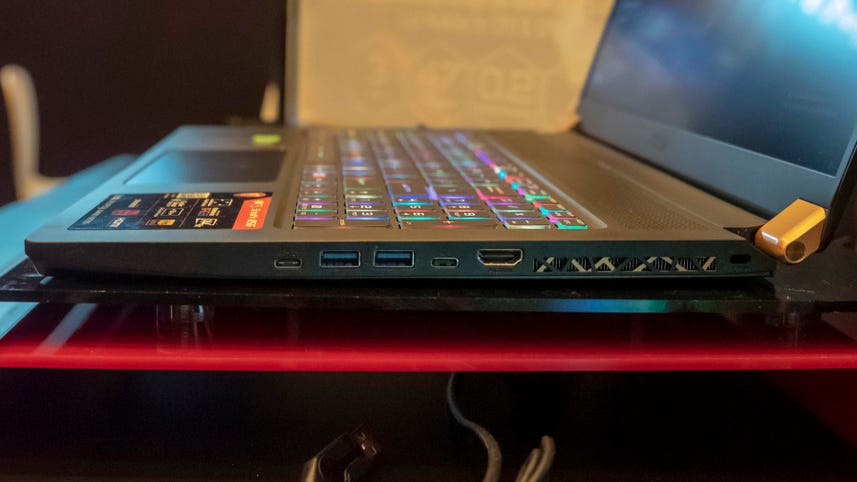
MSI GS75 Stealth
MSI delivered unto us a 17-inch version of its stunning and obscenely thin GS65 Stealth Max-Q gaming laptop. With the exception of the RTX GPUs inside (2060, 2070 Max-Q or 2080 Max-Q) the specs are pretty run-of-the mill: 144Hz 1080p display, up to an Intel Core i7. No price or availability on this one, yet.
HP Spectre x360 15 (2019)
HP hasn't provided any configuration details yet, but the laptop is slated to ship in March and HP will announce pricing closer to then.
HP Chromebook 14
HP is one of the first two manufacturers to use AMD's inexpensive, Chromebook-optimized versions of its A4 and A6 processors in its Chromebook 14, which makes it cheaper than its Intel-based sibling.
HP Chromebook 14
It's shipping this month starting at $270.
Acer Chromebok 315
Acer's the other manufacturer to pick up AMD's Chromebook-oriented A4 and A6 processors for its Chromebook 315. It will be available in February starting at $280.
HP Omen 15 (2019)
HP's upgradable gaming laptop is getting a refresh in February with updated mobile processor and Nvidia RTX Max-Q graphics technology options, plus it's slated for another update in July, adding configurations with a 240Hz 1080p screen and 802.11ax (Wi-Fi 6) or Gigabit Wi-Fi.
HP Omen 15
Prices at launch will start at $1,370.
Razer Blade 15 Advanced
Razer is taking its excellent 15-inch Blade and adding Nvidia RTX graphics to its Max-Q design, up to the RTX 2080. Razer also added an IR webcam so that you can use it with Windows Hello face-recognition.
Razer Blade 15 Advanced
The new RTX 20-series version is coming Jan. 29, with pricing between $2,300 and $3,000.
Acer Swift 7 (2019)
The competition for slimmest everything still seems to be raging on. This year, Acer reduced the screen bezels to less than 3mm, making the laptop's footprint smaller and allowing for a screen-to-body ratio of 92 percent. The 1.9-pound (0.9 kg) laptop gained a hair of thickness in exchange, going from 9mm to 10mm. It's got a processor upgrade as well, from a seventh-gen CPU to the eighth-gen Intel Core i7-8500Y, similar to what you'd find in a new MacBook Air. It's coming to the US in May, starting at $1,700.
Asus Zenbook S13
Another slimmer-than-though contender, this 14-inch Zenbook (UX392) further shrinks its bezels for a market-leading 97 percent screen-to-body ratio. It still manages to squeeze in GeForce MX150 discrete graphics, though. We don't yet know pricing or availability.
Asus Zenbook 14
The ZenBook 14 (model UX431) is a little bigger and heavier than the S13 at a little more than 3 pounds and packs in higher-end components, but shares the same spun aluminum aesthetic. It starts at $750 and will ship in March or April.
Asus Studiobook S W700
Oddly, Asus is positioning this 17-inch mobile workstation as a laptop for creatives -- I guess you go where the money is. Asus' twist over the competition is its thin and light, narrow-bezel aesthetic, something that HP's and Dell's models have only brought to their 15-inch models thus far; the 17-inch models still tend to be the power-packing workhorses. It comes with an Nvidia Quadro P3200 workstation GPU and 802.11ax (Wi-Fi 6) wireless. and you can configure it with up to an Intel Xeon E-2176M or Core i7-8750H, up to 64GB ECC memory and more. Asus claims the 8-bit HD display covers 97 percent of the DCI-P3 gamut with color accuracy below 2 Delta E, though it doesn't seem to support hardware calibration profiles. We don't know price or availability yet.
Samsung Notebook Flash
Samsung distinguishes its Notebook Flash over the highly commoditized competition with an edgier design -- a fabric-textured chassis and rounded chiclet keycaps. It starts at $350 (roughly £275 , AU$490), runs on a low-end Intel Celeron N4000 and incorporates 4GB of memory and 64GB of eMMC flash storage. Those are the components you'd find in a similarly priced Chromebook, but this is running Windows 10 Home.
Samsung Notebook 9 Pro (2019)
For the new model of its flagship laptop, Samsung conducted a US-specific design study that influenced its choices on bezel design, profile taper and corner radii, a spokesman told CNET. The result is a very different design from its previous models. The new look sports sharp edges and contrasting keys, adds a premium feel to the already excellent Pro. Plus, it comes with the full-grown Active Pen rather than the mobile-size S-Pen. It will be available in early 2019; no pricing is available yet, but it's likely upward of $1,000.
Samsung Notebook 9 Pen (2019)
The updated Notebook 9 Pen two-in-one laptop for creatives is redesigned for 2019 with narrower bezels and a new, brighter 500-nit screen. Plus, its new pen has improved latency and comes with three different tips for a more customizable feel. Exact pricing isn't available yet, but it will come in 13.3- and 15-inch versions when it arrives next year. Other than screen size, the biggest difference between the two models will be the availability of entry-level discrete graphics on the 15-inch version. Samsung is promising up to 15 hours of battery life and fast-charging capabilities for each.
Lenovo Thinkpad X1 Carbon (2019)
The updated ThinkPad X1 Carbon has a refreshed body that's thinner and lighter than the previous model, but of course retaining the carbon-fiber finish from which it gets its name. it will ship in June, with prices starting at $1,710.
Lenovo Legion Y740 and Y540
Available in both 15- and 17-inch sizes, the Legion Y740 will offer up to GeForce RTX 2080 Max-Q graphics, while the 15-inch Y530 will have only the GeForce RTX 2060. The higher-end Y730 will come with a 144Hz full HD with G-Sync, but you'll be able to configure it with a Dolby Vision HDR 400 500-nit display. The Y540 gets a more typical 60Hz full HD display with the option for a 144Hz version with Dolby Vision HDR. The Y740 will ship in Feburary, starting at $1,750 for the 15-inch and $1,950 for the 17-inch; the 15-inch Y540 arrives later in May starting at $930.
Dell XPS 13 (2019)
Dell's terrific 13-inch ultraportable had only one real flaw, and Dell finally kicked its up-nose-view webcam placement to the curb for 2019.
Dell XPS 13 (2019)
It's available now, starting at $900.
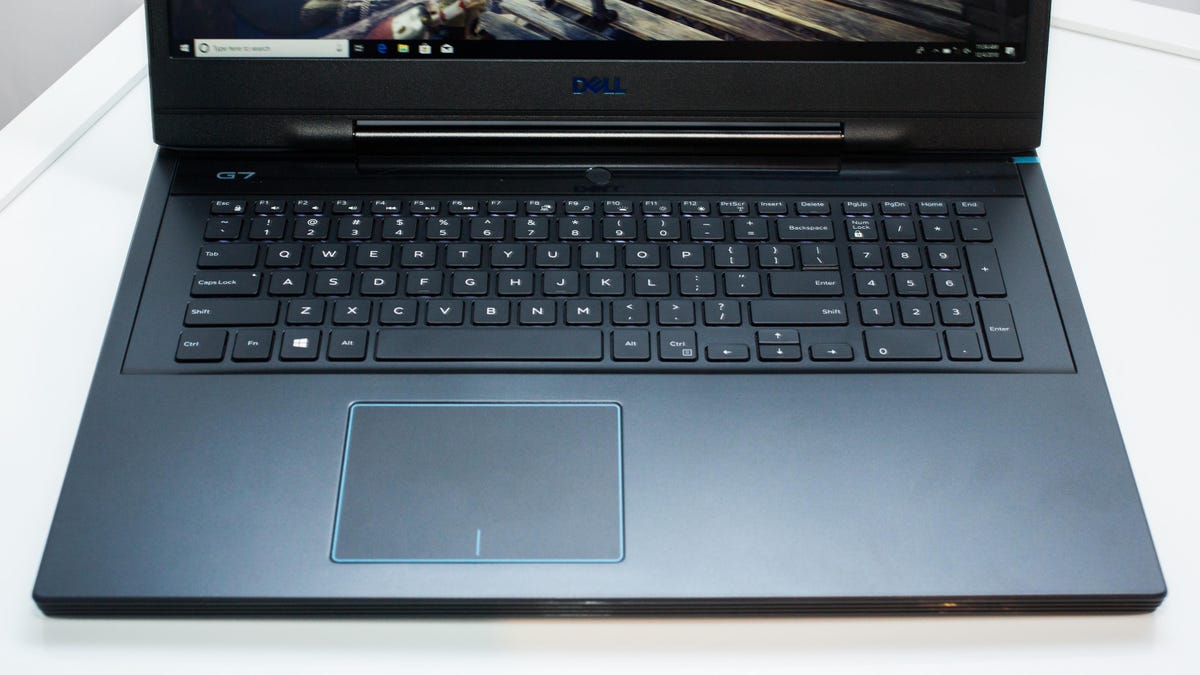
Dell G5 and G7
In addition to updating the processor and graphics options for the new year, Dell tweaked the design of some of our favorite budget gaming laptops, making them thinner and sporting thinner display bezels. Plus, there's now a sporty new option for the G5 15, a white Special Edition with a clear panel on the bottom so you can see the blue fans a-spinning.
Dell G5 and G7
Updated versions of Dell's very good budget gaming line will be available at the end of January. The Dell G5 15 starts at $1,000, the G7 17 at $1,380 and the G7 15 starting at $1,100.
Dell Inspiron 7000 2-in-1 Black Edition
Black is back, at least for this Dell convertible laptop. In addition to the new dark attitude, Dell built a little garage for its pen that let you dock it inside the laptop so you don't lose it. Narrower bezels around the displays shrank the overall footprint of the 15-inch model, but a 13.3-inch version will also be available. A silver model without a pen garage will also be on sale when it ships in May.
Lenovo Yoga S940
The new ultraportable Yoga has a display that goes nearly edge to edge thanks to some seriously slim bezels. On top of that, the glass curves around those bezels and disappears into the lid -- the world's first laptop with this curved glass. You'll be able to configure it with a 4K DisplayHDR 400 screen or or a 400-nit FHD (1,920 by 1,080-pixel) Dolby Vision panel.
If you connect the S940 to an external display -- it has two Thunderbolt 3 USB-C ports -- you'll be able to use its Glance by Mirametrix attention-sensing AI, which detects whether you're looking at the laptop's display or the attached one, and will move open windows accordingly. It will ship in May.
Samsung Notebook Odyssey 2
In addition to garnering the latest components, including an Nvidia GeForce RTX 2080 (though it tops out at a Core i7), Samsung ditched it's radical but questionable design from last year and gave its Odyssey gaming notebook into a more conventional design. We don't know the price and only that it's expected to ship in "early 2019."
For much more on laptops and PCs at CES 2019, see our colossal wrapup here.
Origin PC EVO16-S
Origin PC EVO16-S
Acer Chromebook 315
Acer Chromebook 315
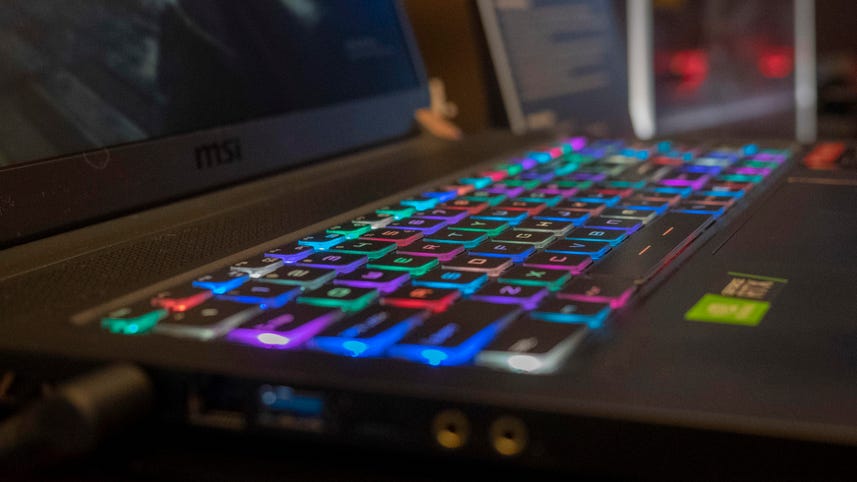
MSI G75 Stealth
